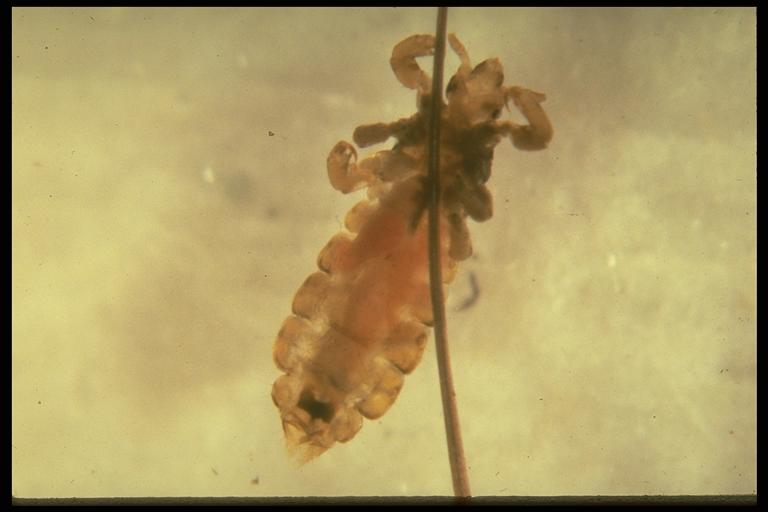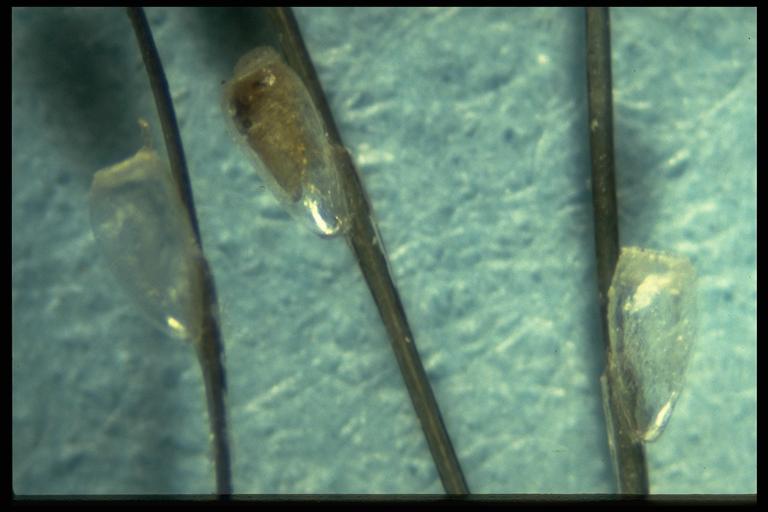
Head louse, Pediculus humanus capitus DeGeer (Phthiraptera: Pediculidae). Photo by B. Brewer.
Common Name: Louse
Scientific Name: Pediculus humanus capitus
Order: Phthiraptera
Description: The head louse, Pediculus humanus capitus DeGeer, and the body louse, Pediculus humanus humanus Linnaeus, are subspecies that appear similar but infest different parts of the human body. Adult lice are about 1/12 to 1/8-inch long with six legs that bear claws for grabbing hair. Their abdomens are longer than wide and dirty white to grayish-black in color, depending on the color of the host. Oval shaped eggs, called nits, are glued to the base of hair or fabric fibers and are grayish white to tan and about 1/32 inch (1 mm) long. After hatching they appear clear. For head lice, nits found on hair more than 1/4 inch from the scalp have already hatched or will not hatch, and may be associated with a past infestation. Adult lice are wingless
Life Cycle: Female head lice attach eggs to the hair shafts of the host particularly behind the ears and the nape of the neck, while body lice glue their eggs predominantly on clothing fibers. Eggs hatch in 5 to 10 days into nymphs resembling small adults. Nymphs develop through three stages (instars) to adults in 8 to 10 days for head lice and 2 to 2-1/2 weeks for body lice. Adults can live for 3 or more weeks.

Lice eggs or “nits”. Photo by Drees.
Habitat and Food Source(s): Lice feed every 3 to 6 hours by sucking blood and do not usually survive for more than 48 hours away from the host, although eggs on clothing and other articles can survive off the host longer. Head lice and body lice are parasites only of humans. The head louse is found predominately on the head, while the body louse lives in seams and linings of clothing, blankets and sheets from which they periodically crawl onto the skin to feed. Lice are spread primarily by close personal contact and by sharing personal articles such as brushes, caps and other headgear, or storing these in shared lockers.
Pest Status, Damage: Lice suck blood, causing skin irritation and itching; capable of spreading human disease agents such as those causing typhus and epidemic relapsing fever. They are easily spread, with the head lice often being a problem among school children who are in close daily contact. Louse eggs are also called “nits.
For additional information, contact your local Texas A&M AgriLife Extension Service agent or search for other state Extension offices.
Literature: Hamman and Olson 1985.